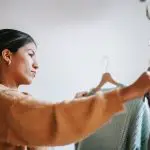Are you curious about the future of the global fabric market? We’ve got 11 predictions that will blow your mind.
Get ready for sustainable fabrics on the rise, cutting-edge advancements in production, and a growing demand for eco-friendly textiles.
Plus, we’ll dive into the world of smart fabrics, the influence of the athleisure trend, and emerging dyeing and printing techniques.
Buckle up and get ready for an exciting journey into the future of fabrics.
Table of Contents
Rise of Sustainable Fabrics
You can expect the global fabric market to witness a significant rise in the demand for sustainable fabrics. With the increasing focus on environmental sustainability, consumers are becoming more conscious of the impact their choices have on the planet. This has led to an innovation in sustainable textiles, paving the way for a future of fabric recycling.
In recent years, there’s been a growing interest in finding alternative solutions to traditional fabrics that are harmful to the environment. This has resulted in the development of innovative sustainable textiles that are made from recycled materials, such as plastic bottles, fishing nets, and even agricultural waste. These materials not only reduce the amount of waste going to landfills, but they also require less water, energy, and chemicals during their production process.
Moreover, the future of fabric recycling looks promising. As more and more consumers embrace sustainable fashion, there’s a need for effective ways to recycle and repurpose old textiles. This has led to the development of advanced recycling technologies that can convert old garments into new fabrics, reducing the need for virgin materials and minimizing the carbon footprint of the industry.
Technological Advancements in Fabric Production
With the increasing demand for sustainable fabrics, advancements in technology have revolutionized fabric production in the global market. Smart textile technology and innovative fabric production methods have paved the way for more efficient and eco-friendly processes.
| Advancement | Description | Benefits |
|---|---|---|
| Smart Textile Technology | Incorporating electronics and sensors into fabrics, smart textile technology allows for functionalities such as temperature regulation, moisture control, and even biometric monitoring. | 1. Enhanced comfort and performance for the wearer. 2. Improved safety and protection. 3. Potential applications in healthcare and sports industries. |
| Innovative Fabric Production Methods | New methods, such as 3D printing and laser cutting, have transformed the way fabrics are produced. These techniques offer greater precision, customization, and reduced waste. | 1. Increased design possibilities. 2. Streamlined production processes. 3. Reduced environmental impact through waste reduction. |
Smart textile technology has opened up a world of possibilities, allowing fabrics to be more than just a covering for the body. By integrating electronics and sensors, fabrics can now actively respond to the wearer’s needs, providing enhanced comfort and performance. This technology also has potential applications in healthcare, where fabrics can monitor vital signs, and in sports, where they can track performance metrics.
Innovative fabric production methods, such as 3D printing and laser cutting, have also revolutionized the industry. These techniques allow for greater design possibilities and customization, as well as more efficient production processes. They also contribute to reduced waste, as fabrics can now be created with minimal material usage.
Increased Demand for Eco-Friendly Textiles
The demand for eco-friendly textiles is steadily increasing as you, the consumer, actively seek sustainable options for your clothing. With growing concerns about the environmental impact of the fashion industry, there’s a strong push towards eco-friendly manufacturing and sustainable fashion.
Eco-friendly manufacturing involves using processes and materials that minimize harm to the environment. This includes reducing water and energy consumption, utilizing organic and biodegradable materials, and implementing responsible waste management practices. By opting for eco-friendly textiles, you can feel good about reducing your carbon footprint and supporting companies that prioritize sustainability.
Sustainable fashion goes beyond just the manufacturing process and extends to the entire lifecycle of a garment. It involves choosing high-quality, durable fabrics that last longer, promoting slow fashion and discouraging disposable fashion trends. By investing in timeless pieces made from eco-friendly textiles, you can contribute to reducing the amount of textile waste ending up in landfills.
As the demand for eco-friendly textiles continues to rise, more and more brands are recognizing the importance of offering sustainable options. From small, independent labels to global fashion powerhouses, companies are incorporating eco-friendly manufacturing practices and materials into their collections, making it easier than ever for you to make a conscious choice when it comes to your wardrobe.
Growing Popularity of Smart Fabrics
Smart fabrics are revolutionizing the textile industry by bringing together technology and fashion in unprecedented ways. As consumers become more tech-savvy and seek innovative products, the demand for smart fabrics continues to grow.
The possibilities for innovation in this field are endless. From clothing that monitors vital signs to garments that adjust to temperature changes, smart fabrics have the potential to greatly enhance our daily lives. These fabrics not only provide convenience and comfort but also offer opportunities for improved health monitoring and personalization.
With advancements in technology, smart fabrics are becoming more accessible and affordable. This opens up new avenues for designers and manufacturers to explore and create unique and exciting products. The integration of sensors, actuators, and connectivity into fabrics is creating a new era of wearable technology that seamlessly blends with our everyday lives.
In addition to their functional benefits, smart fabrics also present exciting opportunities for sustainability in the fashion industry. By incorporating renewable energy sources and materials into the production process, smart fabrics can contribute to a more eco-friendly and socially responsible approach to fashion.
Smart Fabrics Revolutionize
Get ready to witness a significant increase in the popularity of smart fabrics as they revolutionize the global fabric market.
Smart fabrics have already made their mark in the healthcare industry, where they’re being used to monitor patients’ vital signs and transmit data to healthcare professionals in real-time. These fabrics can track heart rate, temperature, and even detect falls, making them invaluable in providing proactive care and improving patient outcomes.
Furthermore, smart fabrics are also making waves in the sports industry. Athletes can now wear clothing embedded with sensors that monitor their performance, providing valuable insights into their training and helping them enhance their skills. This technology enables coaches and athletes to analyze data and make informed decisions to optimize performance and prevent injuries.
With the countless possibilities and benefits that smart fabrics offer, their popularity is sure to continue skyrocketing in the coming years.
Technology Meets Fashion
You can expect a substantial increase in the popularity of smart fabrics as they continue to gain traction in the fashion industry.
With the rise of wearable technology, digital textiles are becoming more prevalent in the market.
Smart fabrics are revolutionizing the way we interact with clothing by integrating technology seamlessly into our everyday lives. These fabrics have the capability to monitor vital signs, track physical activity, and even charge electronic devices.
The growing demand for smart fabrics is driven by the desire for functional and stylish clothing that can enhance our lives.
As technology continues to advance, we can expect to see even more innovative applications of smart fabrics in the future, further blurring the lines between fashion and technology.
Increasing Demand for Innovation
As technology continues to advance, the demand for innovative fabrics that seamlessly integrate technology into fashion is on the rise. Consumers are looking for more than just basic fabrics; they want fabrics that can do more. This increasing demand for innovation in fabric design has led to significant advancements in fabric technology. Smart fabrics, also known as e-textiles, are becoming increasingly popular in the fashion industry. These fabrics are embedded with electronic components, such as sensors, LEDs, and conductive materials, allowing them to interact with the wearer and the environment. The table below highlights some key examples of smart fabrics and their applications:
| Smart Fabric | Application |
|---|---|
| Conductive textiles | Enhanced touchscreens |
| Shape-memory fabrics | Adaptive clothing |
| Photovoltaic fabrics | Solar-powered devices |
The growing popularity of smart fabrics is driving the textile industry towards a future where technology and fashion seamlessly merge, offering consumers endless possibilities in terms of style and functionality.
Shift Towards Circular Economy in the Fabric Industry
In the fabric industry, there’s a growing shift towards adopting a circular economy. This shift is driven by the need to address the environmental impact of the industry and find sustainable solutions. Circular economy solutions aim to minimize waste and maximize resource efficiency by creating closed loop manufacturing processes.
One of the key aspects of a circular economy in the fabric industry is closed loop manufacturing. This means that instead of following a linear model where materials are used and then discarded, the industry aims to create a closed loop where materials are recycled and reused. This helps to reduce the amount of waste generated and the reliance on virgin resources.
Circular economy solutions in the fabric industry also focus on extending the lifespan of products through repair, refurbishment, and recycling. By promoting the reuse and recycling of fabrics, the industry can reduce the demand for new materials and minimize environmental impact.
Furthermore, the shift towards a circular economy is also driven by consumer demand for sustainable and eco-friendly products. Consumers are becoming more aware of the environmental consequences of their choices and are seeking products that align with their values. As a result, fabric manufacturers are increasingly adopting circular economy practices to meet this growing demand.
Rise of 3D Printing in Fabric Manufacturing
You may be wondering how the rise of 3D printing in fabric manufacturing will impact traditional manufacturing methods.
With the ability to create intricate designs and complex structures, 3D printing opens up new possibilities for fabric design.
Additionally, this technology has the potential to contribute to sustainability efforts by reducing waste in the production process.
Impact on Traditional Manufacturing
Embrace the digital revolution and witness the disruption caused by the exponential growth of 3D printing in fabric manufacturing. As emerging technologies continue to revolutionize the manufacturing industry, automation in manufacturing is becoming increasingly prevalent. Traditional manufacturing methods are being challenged by the rise of 3D printing, which offers numerous advantages such as increased customization, reduced production time, and decreased waste. This shift towards additive manufacturing has the potential to completely transform the fabric market. To better understand the impact of 3D printing on traditional manufacturing, let’s take a look at a comparison of the two methods:
| Traditional Manufacturing | 3D Printing |
|---|---|
| Mass production | Customization |
| Lengthy production time | Reduced production time |
| High material waste | Decreased waste |
The rise of 3D printing in fabric manufacturing signifies a fundamental shift in the industry, paving the way for a more sustainable and efficient future.
New Design Possibilities
As the fabric market embraces the rise of 3D printing in manufacturing, new design possibilities are opening up. The integration of new textile technologies and the use of innovative fabric applications are revolutionizing the way fabrics are produced and utilized.
3D printing allows for the creation of intricate and complex fabric structures that were previously impossible to achieve through traditional manufacturing methods. This technology enables designers to experiment with unique patterns, textures, and shapes, pushing the boundaries of traditional fabric design.
With 3D printing, fabrics can be customized to specific requirements, resulting in garments that fit perfectly and provide enhanced comfort and performance. The possibilities are endless, and as the fabric market continues to embrace this new technology, we can expect to see even more groundbreaking designs and applications in the future.
Sustainability and Waste Reduction
With the rise of 3D printing in fabric manufacturing, the fabric market is witnessing a significant shift towards sustainability and waste reduction. This shift is driven by the adoption of circular economy solutions and innovative recycling methods.
3D printing allows for precise customization of fabric products, reducing the amount of material wasted during production. In traditional fabric manufacturing, significant amounts of fabric are discarded due to cutting and shaping processes. However, with 3D printing, fabric products can be created layer by layer, minimizing material waste.
Additionally, the use of recycled materials in 3D printing further contributes to waste reduction and sustainability. This innovative approach to fabric manufacturing not only reduces the industry’s environmental impact but also opens up new possibilities for creating unique and sustainable fabric products.
Impact of Fast Fashion on the Fabric Market
Fast fashion has had a significant impact on the fabric market. The rise of fast fashion brands, characterized by their ability to quickly produce and distribute affordable clothing, has led to an increased demand for fabrics. However, this demand has come at a cost.
One of the main concerns associated with fast fashion is its ethical production practices. Many fast fashion brands have been criticized for exploiting labor in order to keep prices low. Workers in developing countries often face long hours, low wages, and unsafe working conditions. This exploitation extends to the fabric market, as manufacturers are pressured to produce fabrics at a rapid pace, often disregarding the well-being of workers.
Additionally, the fast fashion industry’s focus on quick turnover and low prices has led to a decrease in the quality of fabrics used. Fast fashion garments are often made from synthetic materials that are cheap to produce, but have a negative impact on the environment. These fabrics aren’t only harmful during production, but also contribute to pollution when they’re discarded.
Growing Demand for Natural and Organic Fabrics
The increasing demand for natural and organic fabrics continues to shape the fabric market, with consumers seeking sustainable alternatives to fast fashion materials. As people become more aware of the environmental impact caused by synthetic fabrics and the unethical practices associated with their production, there’s been a significant shift towards natural fabric alternatives.
Natural fabrics, such as cotton, linen, and hemp, are derived from plant sources and are biodegradable, making them more environmentally friendly compared to synthetic fabrics like polyester and nylon.
In addition to the environmental benefits, the growing demand for natural and organic fabrics is also driven by the desire for ethical sourcing. Consumers are becoming increasingly concerned about the social and ethical implications of their purchasing decisions. They want to support brands that prioritize fair labor practices and ensure that workers involved in fabric production are treated fairly and paid a living wage.
This demand for ethical sourcing extends to the entire supply chain, from the farmers cultivating the raw materials to the manufacturers producing the final fabric.
In response to this trend, many fashion brands and retailers are now offering a wider range of natural fabric alternatives and highlighting their commitment to ethical sourcing. By providing consumers with sustainable and ethically sourced fabric options, these brands aren’t only meeting consumer demand but also contributing to a more sustainable and responsible textile industry.
Influence of Athleisure Trend on Fabric Choices
The athleisure trend has had a significant impact on the fashion industry, influencing fabric choices in various ways.
With the rise in popularity of athleisure wear, there’s been a growing demand for performance fabrics that offer comfort, breathability, and flexibility.
This trend has also led to a shift in consumer preferences, with more people opting for fabrics that can seamlessly transition from workout sessions to everyday wear.
Impact on Fashion Industry
With the rise of the athleisure trend, you’ll notice a significant shift in fabric choices within the fashion industry.
The influence of ethical fashion and sustainable manufacturing practices has led to a greater demand for fabrics that aren’t only comfortable and versatile but also environmentally friendly. Brands are now opting for materials that are produced using sustainable methods and are biodegradable or recyclable.
Fabrics made from organic cotton, bamboo, and recycled polyester are becoming more popular as they offer a more sustainable alternative to conventional materials. Additionally, innovative technologies are being developed to create fabrics from renewable resources such as seaweed and pineapple fibers.
As the athleisure trend continues to evolve, the fashion industry is embracing fabric choices that align with the values of ethical fashion and sustainable manufacturing.
Demand for Performance Fabrics
As the athleisure trend continues to shape fabric choices in the fashion industry, you’ll see a growing demand for performance fabrics. Performance fabric innovations, such as moisture-wicking, stretchability, and breathability, have become essential features for consumers who prioritize comfort and functionality in their clothing.
Athleisure, which combines athletic wear with everyday fashion, has revolutionized the way people dress, blurring the line between activewear and casual clothing. This trend has been driven by the desire for flexible and versatile garments that can seamlessly transition from the gym to daily activities.
The market growth drivers for performance fabrics are expected to include the increasing focus on health and wellness, the rise of fitness culture, and the growing awareness of sustainable and eco-friendly materials.
Manufacturers and designers are constantly pushing the boundaries of fabric technology to meet the evolving needs of consumers in this athleisure-driven market.
Shift in Consumer Preferences
You’ll notice a significant shift in consumer preferences towards fabric choices due to the influence of the athleisure trend. The changing consumer preferences and the evolution of fashion trends have played a crucial role in this shift.
Athleisure, a trend that combines athletic and leisurewear, has become increasingly popular in recent years. This trend hasn’t only influenced the way people dress but also the fabrics they choose.
Consumers now prioritize comfort, flexibility, and moisture-wicking properties in their clothing, leading to a higher demand for performance fabrics like spandex, polyester blends, and microfibers. These fabrics offer stretchability, breathability, and durability, making them ideal for athleisure wear.
As the athleisure trend continues to grow, we can expect consumer preferences for fabric choices to further evolve, emphasizing functionality and comfort alongside style.
Emerging Trends in Fabric Dyeing and Printing
To stay ahead in the global fabric market, it is essential for you to explore the emerging trends in fabric dyeing and printing. As technology continues to advance, new and innovative techniques are being developed to enhance the fabric dyeing and printing processes. One of the most exciting trends in this field is the emergence of digital printing techniques. Digital printing allows for greater precision and detail in fabric designs, resulting in vibrant and eye-catching patterns. This technique also offers the advantage of being more environmentally friendly, as it reduces water and chemical waste compared to traditional methods.
Another trend to watch out for is the development of innovative fabric dyeing processes. Manufacturers are constantly experimenting with new ways to apply dyes to fabrics, such as using natural dyes derived from plants or even bacteria. These innovative processes not only produce unique and interesting color effects, but they also have the potential to reduce the environmental impact of fabric dyeing.
To give you a clearer picture, here’s a table highlighting some of the emerging trends in fabric dyeing and printing:
| Trend | Description |
|---|---|
| Digital printing techniques | Utilizes advanced technology to achieve precise and vibrant fabric designs |
| Innovative fabric dyeing | Explores new methods, such as natural dyes, to create unique color effects |
Impact of Global Events on the Fabric Market
The COVID-19 pandemic has significantly impacted the global fabric market, causing disruptions in supply chains and changes in consumer buying patterns. The global pandemic has led to factory closures, travel restrictions, and reduced consumer spending, all of which have had a profound effect on the fabric industry. With countries implementing lockdown measures and social distancing guidelines, the demand for fabrics used in clothing and textiles has plummeted. As a result, manufacturers and suppliers have struggled to maintain their operations and meet customer demands.
Additionally, trade wars between major economies have further exacerbated the challenges faced by the fabric market. Tariffs and trade barriers imposed on textiles and apparel have disrupted global supply chains and increased costs for manufacturers. These trade disputes haven’t only affected the fabric market directly but have also created an uncertain business environment, hindering investment and growth.
However, the fabric market has shown resilience in the face of these challenges. Manufacturers have adapted by diversifying their product offerings, focusing on essential items such as personal protective equipment (PPE) and medical textiles. Online sales platforms have also gained prominence as consumers increasingly turn to e-commerce for their fabric purchases.
Frequently Asked Questions
What Are the Current Trends in Fabric Dyeing and Printing?
The current trends in fabric dyeing and printing involve sustainable dyeing techniques and digital printing advancements. These methods are becoming increasingly popular in the global fabric market due to their eco-friendly and efficient nature.
How Have Global Events Affected the Fabric Market in Recent Years?
Global events like trade wars and the COVID-19 pandemic have had a significant impact on the fabric market in recent years. Sustainability efforts in fabric production have also become a key focus.
What Is the Impact of Fast Fashion on the Fabric Market?
The impact of fast fashion on the fabric market is significant. Sustainability challenges arise due to the high demand for cheap clothing. Consumer behavior changes, with a focus on affordability and constant fashion trends.
How Has the Athleisure Trend Influenced Fabric Choices?
The athleisure trend has influenced fabric choices by increasing demand for sustainable alternatives in the fashion industry. People like you are seeking activewear made from eco-friendly materials to reduce the impact on the environment.
What Are Some Emerging Trends in Fabric Manufacturing, Apart From 3D Printing?
Emerging trends in fabric manufacturing, apart from 3D printing, include the use of smart textiles and sustainable materials. These innovations are revolutionizing the industry and driving the future of the global fabric market.
- How Does Ring Spun Cotton Affect Garment Fit and Shape Retention? - August 13, 2024
- What Are the Challenges in Producing Ring Spun Cotton? - August 13, 2024
- Is Ring Spun Cotton Suitable for Plus-Size Clothing? - August 13, 2024






